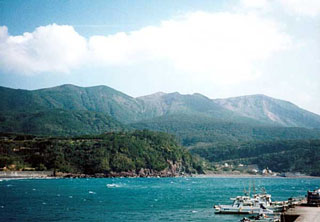Report on Kuchinoerabujima (Japan) — 30 June-6 July 2021
Smithsonian Institution / US Geological Survey
Weekly Volcanic Activity Report, 30 June-6 July 2021
Managing Editor: Sally Sennert.
Please cite this report as:
Global Volcanism Program, 2021. Report on Kuchinoerabujima (Japan) (Sennert, S, ed.). Weekly Volcanic Activity Report, 30 June-6 July 2021. Smithsonian Institution and US Geological Survey.
Kuchinoerabujima
Japan
30.443°N, 130.217°E; summit elev. 657 m
All times are local (unless otherwise noted)
JMA reported that deformation data at Kuchinoerabujima had shown a deflationary trend since February and the number of volcanic earthquakes had been decreasing since May. The Alert Level was lowered to 2 (on a scale of 1-5) on 5 July, and JMA reminded the public to stay 1 km away from Shindake Crater in general and 2 km away from the W flank.
Geological Summary. A group of young stratovolcanoes forms the eastern end of the irregularly shaped island of Kuchinoerabujima in the northern Ryukyu Islands, 15 km W of Yakushima. The Furudake, Shindake, and Noikeyama cones were erupted from south to north, respectively, forming a composite cone with multiple craters. All historical eruptions have occurred from Shindake, although a lava flow from the S flank of Furudake that reached the coast has a very fresh morphology. Frequent explosive eruptions have taken place from Shindake since 1840; the largest of these was in December 1933. Several villages on the 4 x 12 km island are located within a few kilometers of the active crater and have suffered damage from eruptions.

